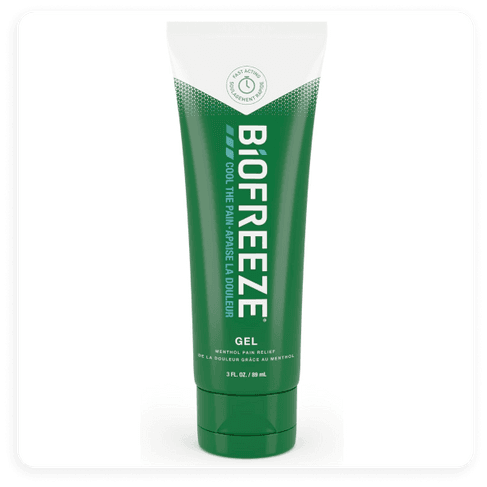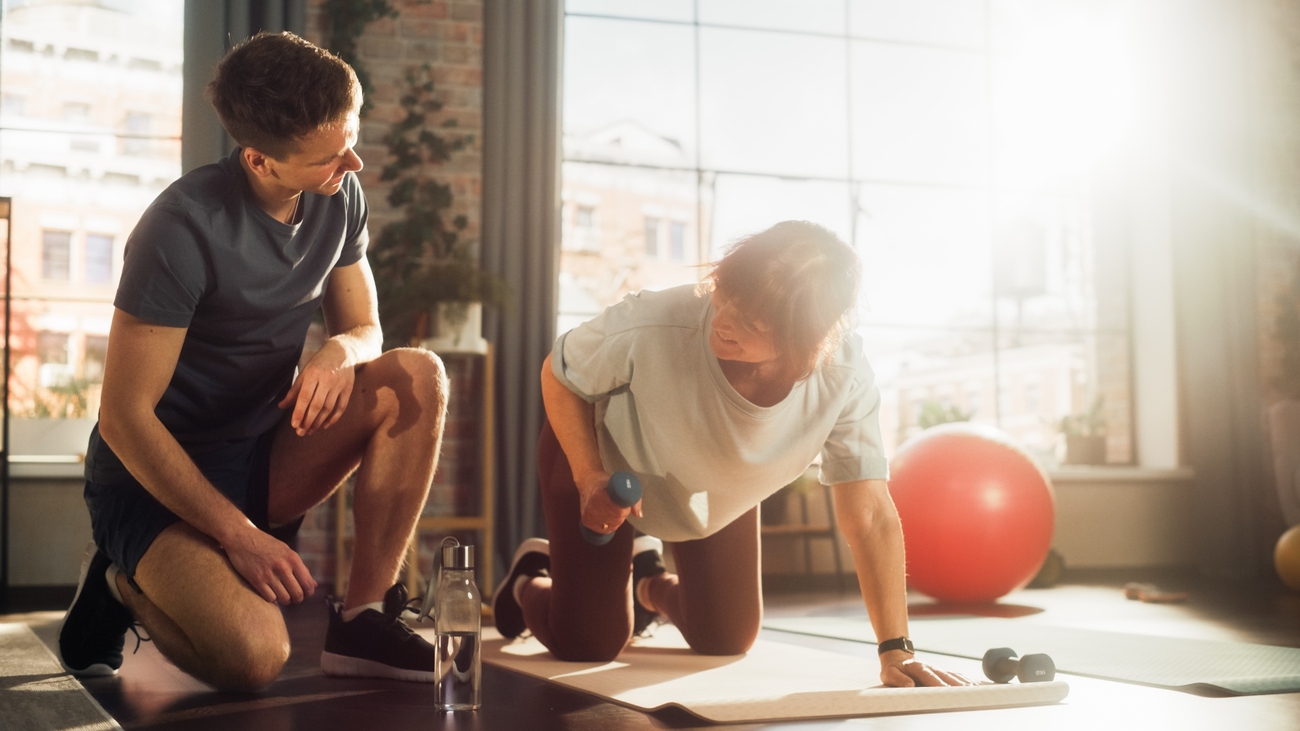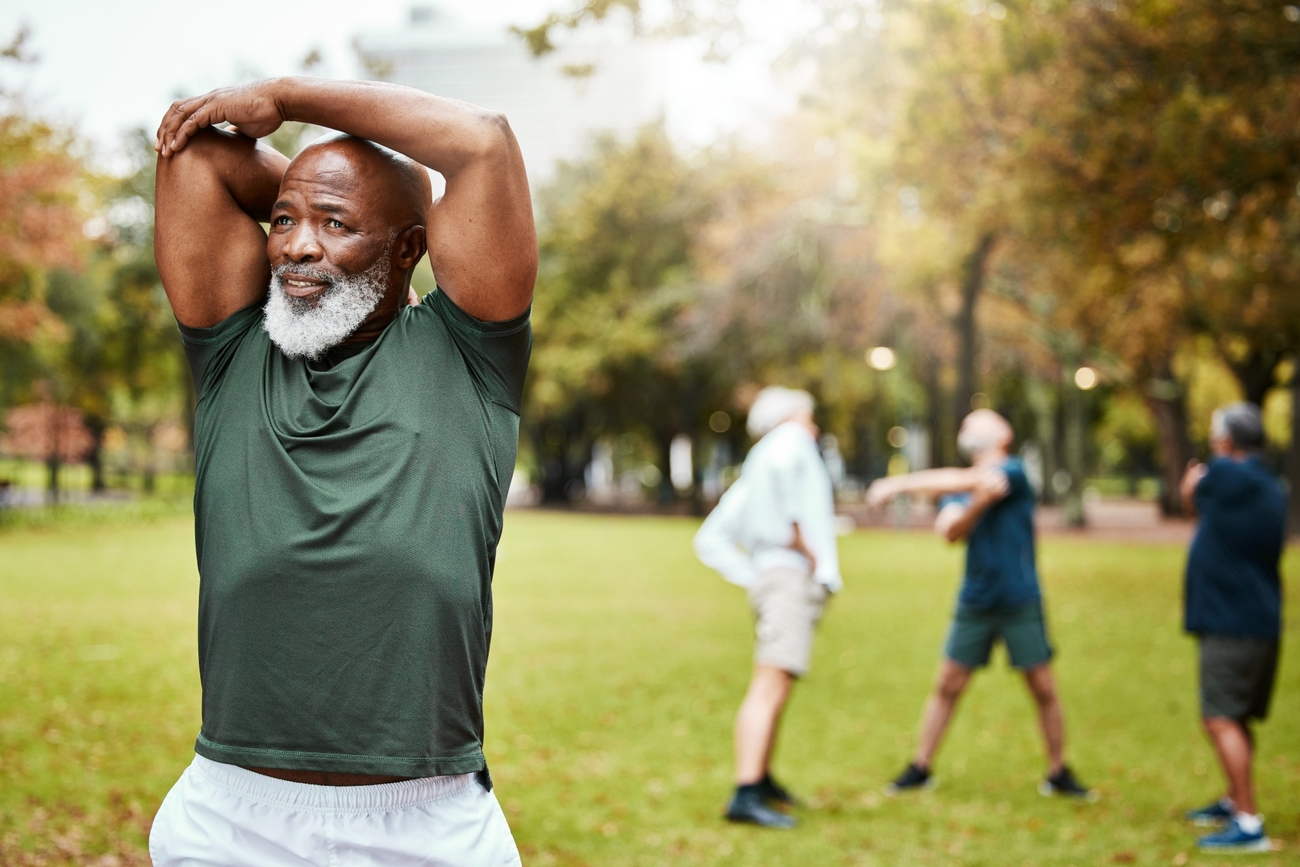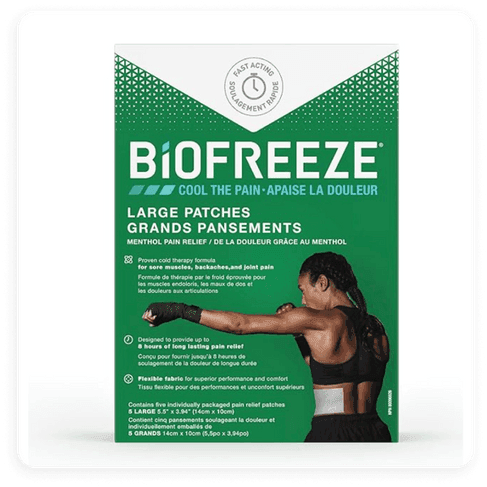Easy application
Targeted relief
Easily covers small & large areas

This article has been medically reviewed for accuracy
Calf muscle pain typically presents as a dull ache felt in the back of the lower leg1. It can cause difficulty with daily movements, including walking, running, and jumping. This is because movement of your lower leg and ankle requires effort by the calf muscles2 and surrounding tendons, such as the Achilles tendon.
There are many causes of calf muscle pain, including an acute muscle injury3, such as a muscle strain or a muscle sprain. These injuries tend to improve over time with simple pain relief treatments1.
This guide covers some of the more common muscle injuries that contribute to calf muscle pain, and various treatment options to reduce and manage lower leg pain.
The following are some potential causes of calf muscle pain:
A contusion is the scientific term for "bruise". Bruises result from an impact injury4 and tend to be painful4.
Bruising occurs because tiny blood vessels under the skin rupture from impact4. Blood then spills out into the surrounding tissue, but remains trapped under the skin4. This is why you tend to see discoloration in the skin after an impact injury to a muscle.
For example, getting kicked in the calf in a game of soccer may cause visible bruising, tenderness, and pain in the calf muscle.
Sudden calf pain5 can be the result of a calf muscle cramp. Cramps involve sudden muscle contractions and tightness in the muscle5 that may cause severe pain.
Muscle overuse and dehydration5 are two main causes of muscle cramps. Overused lower leg muscles, as the result of overtraining or overexertion, tend to become stiff and tight6. Dehydration and lowered electrolytes7, particularly following physical activity, may also cause calf muscles to cramp1.
While cramps themselves may last only a few seconds to a few minutes, affected muscles may be sore for upward of hours1 afterwards. Your cramping pain should go away on its own8 but see a doctor if your cramps are severe, you get them often, or you have other symptoms alongside cramping (like numbness or weakness).
Another common muscle injury that may cause calf muscle pain is muscle strain9. Muscle strains involve overstretching a muscle beyond its normal limits9, causing tears in the muscle that may range from mild to severe.
Mild or moderate muscle strains may be treatable with at-home treatments and rest9. Most cases of muscle strain will fall into these two grades.
Severe muscle strain involves a complete tear in the muscle and may require surgery to repair9.
Calf muscle strains are a common9. Other areas on the body prone to muscle strains9 include:
To prevent muscle strain from reoccurring, make sure to warm up your leg muscles properly9 before working out the legs, as well as warming down after exercise. These measures increase calf muscle flexibility, helping to prevent future injury9.
If you feel calf pain when walking, especially after walking for a while10, you may be experiencing a mild case of Achilles tendinitis.
Achilles tendinitis is inflammation of the Achilles tendon11, which joins the calf muscles to the heel and facilitates walking movement. This inflammation condition occurs when a tendon is overused, or suddenly engaged beyond normal intensity10.
A common symptom of Achilles tendinitis is a dull ache experienced in the back of the lower leg10, which is where the calf muscles sit.
Calf pain may present as a dull ache or sharp pain in the back of the lower leg, depending on the cause of the calf muscle pain.
Other symptoms11 you may experience with calf pain include:
If your symptoms include tingling or numbing in the calf or leg, or if there’s redness or warmth emanating from your muscles, you should contact a healthcare provider.
The following are some treatment options for calf pain:
The RICE method is a common pain management protocol1 that utilizes cold therapy, which may be helpful in managing some symptoms of calf muscle pain.
RICE stands for Rest, Ice, Compression, and Elevation.
Calf muscle pain that presents with tenderness or swelling may benefit from ice application. Ice causes blood vessels to constrict13, which limits swelling and inflammation14.
Ice application, or cold therapy, may also help reduce calf muscle pain by numbing the nerves14 and increasing pain tolerance15.
An alternative pain relief treatment is heat therapy. Heat therapy increases blood flow16 to stiff and sore muscles, encouraging faster recovery due to increased blood flow to the area, which brings oxygen and nutrients.
Calf muscle pain that involves muscle stiffness and painful muscle spasms may benefit from heat therapy as it helps disengage and relax the tight muscles16.
Heat therapy, however, should not be used on calf muscles that have visible bruising or swelling16.
Pain medications, such as nonsteroidal anti-inflammatory drugs17 (including aspirin and ibuprofen), are available over-the-counter for mild cases of muscle pain. However, it is important to consult with your healthcare provider before starting any form of medication.
If taking oral pain medication is not a preferred treatment option, topical pain relievers are an alternative option.
Topical pain relievers, such as Biofreeze topical products*, provide targeted pain relief via external application. Biofreeze products* contain menthol, which causes a physically cooling sensation18 on the skin when applied, and provides pain relief for sore muscles19.
Keep your calf muscle pain at bay with Biofreeze Gel*. For a mess-free application20, try Biofreeze Patches*.
Common calf muscle pain symptoms include tenderness, swelling, muscle tightness, muscle spasms, and pain1.
Massage therapy may help ease and subside some of these symptoms by improving circulation21 and reducing muscle tension and tightness22. It can be a relaxing pain relief option after exercise.
However, massage should not be used on acute muscle strains, particularly in the first few days of injury.
To prevent calf pain from occurring or reoccurring, the following prevention methods may be useful:
While most calf pain can be treated with simple remedies either over-the-counter or at-home, some instances1 warrant an immediate doctor’s visit.
If you’re experiencing any of the above symptoms, call your healthcare provider or seek medical attention right away.
*Ensure this product is right for you. Always read and follow the product label.
Easy application
Targeted relief
Easily covers small & large areas
Mess-free application
Long lasting cooling
Easily covers small & large areas
This article has been medically reviewed for accuracy



Easy application
Targeted relief
Easily covers small & large areas
Mess-free application
Long lasting cooling
Easily covers small & large areas
